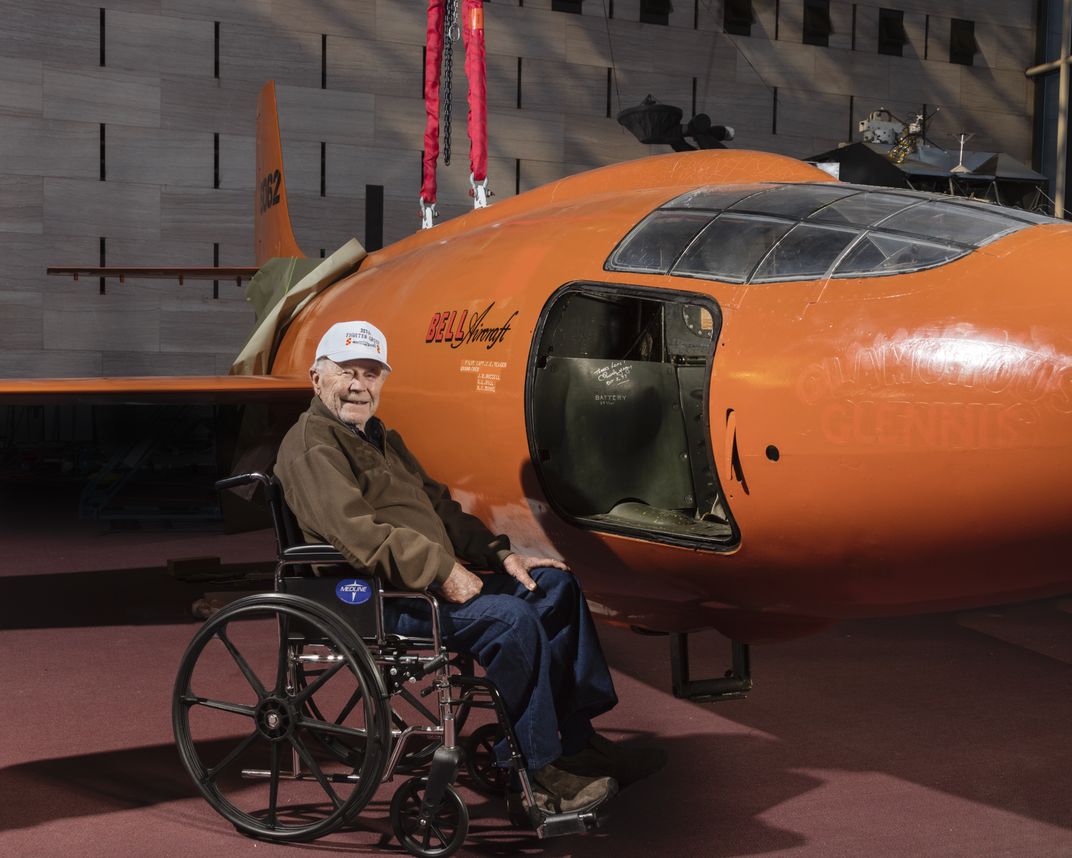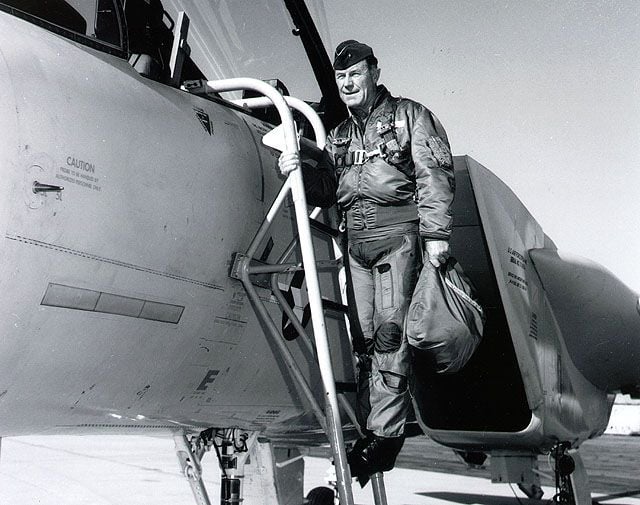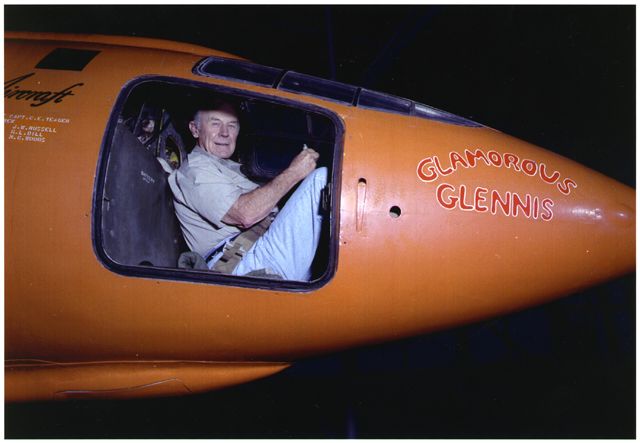Remembering Chuck Yeager, a Pilot with the Right Stuff
The greatest pilot of the greatest generation has passed. Seventy-nine years to the day after the attack on Pearl Harbor, famed test pilot, World War II ace, and the first person to fly faster than the speed of sound, Brig. Gen. Charles “Chuck” Yeager, died at the age of 97.
/https://tf-cmsv2-smithsonianmag-media.s3.amazonaws.com/blogging/featured/SI-86-4483.jpg)
The greatest pilot of the greatest generation has passed. Seventy-nine years to the day after the attack on Pearl Harbor, famed test pilot, World War II ace, and the first person to fly faster than the speed of sound, Brig. Gen. Charles “Chuck” Yeager, died at the age of 97.
On October 14, 1947, Yeager forever shattered the myth of the so-called “sound barrier” when he piloted his Bell X-1 Glamorous Glennis to 700 miles per hour (Mach 1.06) 43,000 feet above the southern California desert. The X-1 program contributed greatly to the understanding of the challenges of transonic and supersonic flight. Of great significance to the security and prosperity of the country, these lessons were directly applied to the next generation of military and commercial aircraft, keeping America in the forefront of aeronautical research.

Born in Myra, West Virginia, on February 13, 1923, Yeager grew up in nearby Hamlin where he developed an innate understanding of all things mechanical. This ability held him in good stead in his military career as his knowledge of machines and his exceptional skills as a pilot would make him an ideal test pilot, despite his lack of a formal college education.
General Yeager began his aviation career in September 1941, enlisting in the Army Air Corps. In July 1942, he was accepted for pilot training in the flying sergeant program, earning his wings and his appointment as flight officer in March 1943.
Following the completion of advanced training, Yeager was assigned to the 357th Fighter Group of the 8th Air Force flying from England. While piloting his North American P-51 Mustang, Yeager destroyed 13 German aircraft in air-to-air combat, including five in one mission. Included in his remarkable tally is one Messerschmitt Me 262, the world's first operational jet fighter. On March 5, 1944, he was shot down over France but escaped capture with the help of the French resistance which spirited him to safety in neutral Spain. He rejoined his unit soon thereafter, serving until February 1945 when he returned to the United States to serve as an instructor pilot. In July 1945, Yeager was assigned to Wright Field, Ohio, where he first engaged in experimental flight work. Following this assignment and until 1954, Yeager flew experimental aircraft from Muroc Army Air Force Base, later renamed Edwards Air Force Base, where, on October 14, 1947, he became the first person ever to fly faster than the speed of sound. His aircraft, a Bell X-1 Glamorous Glennis, named after his wife, is proudly displayed in the Boeing Milestones of Flight Hall at the Smithsonian’s National Air and Space Museum.

Following this posting, General Yeager returned to Europe as Commander of the 417th Fighter Squadron and in 1957 was assigned to the 413th Fighter Wing at George Air Force Base, California. In 1958 he became commander of the 1st Fighter Squadron at Moron Base, Spain.
General Yeager graduated from the Air War College in June 1961, became Commandant of the Aerospace Research Pilot School in July 1962 and in 1966 assumed command of the 405th Fighter Wing at Clark Air Base, Philippines, during which time he flew 127 combat missions over Vietnam. Returning home in 1968, General Yeager took command of the 4th Tactical Fighter Wing at Seymour Johnson Air Force Base, North Carolina, and in 1969 advanced to Vice Commander, 17th Air Force based in Ramstein, Germany. In 1971 he became the United States' Defense Representative to Pakistan, and in 1973 became the Director of the Air Force Inspection and Safety Center at Norton Air Force Base.

General Yeager received the Collier and MacKay Trophies for 1948 and the Harmon International Trophy for 1954. His awards included the Distinguished Service Medal, the Silver Star with one oak leaf cluster, the Legion of Honor with one oak leaf cluster, the Distinguished Flying Cross with two oak leaf clusters, the Bronze Star medal with "V" device, the Air Medal with 10 oak leaf clusters, the Air Force Commendation Medal, the Purple Heart, the Distinguished Unit Citation with one oak leaf cluster, and the Air Force Outstanding Unit Award Ribbon. He was a command pilot with over 10,000 hours in 155 types of aircraft.
Although a legend in the aeronautical community, Yeager’s accomplishments were not widely known until the publication of Tom Wolfe’s The Right Stuff and the subsequent movie highlighted Yeager’s career as a test pilot, making him an immensely popular public figure.
General Yeager was also a good friend to the Smithsonian. For decades he visited the National Air and Space Museum on or about the anniversary of his supersonic flight, each year regaling hundreds of enthralled visitors with stories of his extraordinary career. In 1997, during one of his visits, 50 years to the day after he broke the sound barrier for the first time, Deputy Director Donald Lopez, a friend of Yeager's from their time together as test pilots, arranged for Yeager to climb in the cockpit of the X-1 high above the floor of the Boeing Milestones of Flight Hall. After that remarkable visit, Yeager generously donated his collection of personal items, including his flight jacket and other memorabilia.
A legend has passed.

